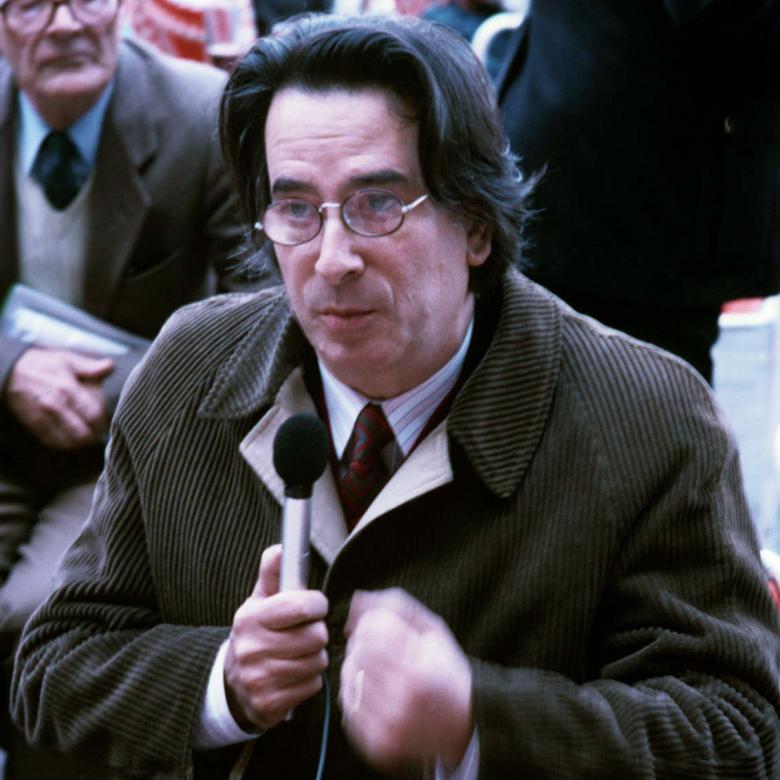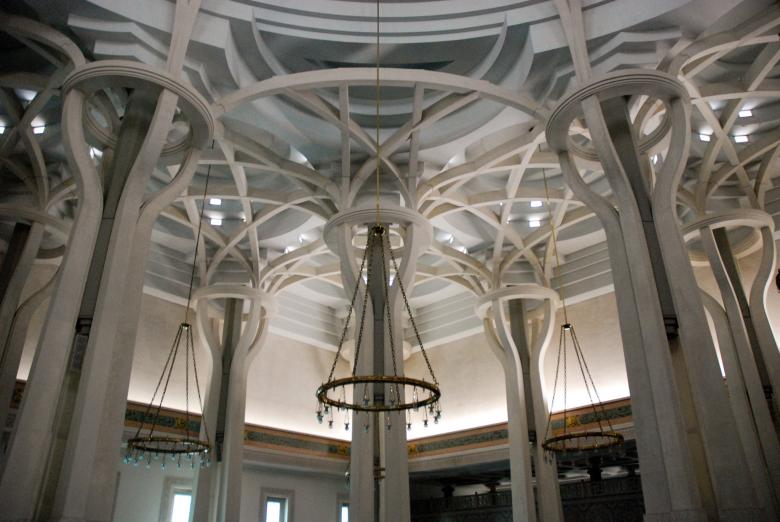Paolo Portoghesi, 1931–2023
John Hill
31. mai 2023
Paolo Portoghesi in 1986 (Photo: indeciso42, cropped from original at Wikimedia Commons)
Paolo Portoghesi died on May 30 at his home in Calcata, a medieval village north of Rome, at the age of 91. Though a prolific architect, historian and educator, Portoghesi will forever be known as the director of the Venice Architecture Biennale who created the Strada Novissima.
The first official International Architecture Exhibition of the Venice Biennale opened on July 27, 1980, under Paolo Portoghesi, who was named director of the exhibition one year earlier. One of his first acts, for the Biennale Teatro in 1979, was commissioning Aldo Rossi to design the Teatro del Mondo moored on the Punta della Dogana directly across from Piazza San Marco. Rossi would also design an entrance for the 1980 exhibition, in which Portoghesi asked twenty international architects — among them Ricardo Bofill, Frank Gehry, Michael Graves, Hans Hollein, Arata Isozaki, Rem Koolhaas, and Robert Venturi and Denise Scott Brown — to design facades for a 70-meter-long “street” inside the Corderie of the Arsenale. Strada Novissima, the largest part of The Presence of the Past exhibition, was the first time the Biennale used the Arsenale, now a staple for its exhibitions, and it became a lasting symbol of the architecture component of the Biennale, eventually traveling to San Francisco and Paris and surviving as photographs and drawings in old magazines and books, and even exhibitions — it was the subject of an exhibition at MAXXI in 2018/19, Dentro La Strada Novissima, also curated by Portoghesi.
"Biennale Architettura - Paolo Portoghesi," 2010 (in Italian)
Portoghesi again served as director of the International Architecture Exhibition in 1982, when the theme was Islamic architecture, and in 1983 he was made president of La Biennale di Venezia, a post he would serve until 1992. He selected the directors for each sector (architecture, art, cinema, music, theater) over those years, with Aldo Rossi and Francesco Dal Co respectively directing the third and fourth International Architecture Exhibitions. Curiously, in William Menking and Aaron Levy's oral history of the Venice Architecture Biennale, published in 2010, Portoghesi said to them, “In my life I have only made exhibitions for he biennale. Making exhibitions is generally not my thing — my preferred work is design. But I remember the biennale as being a very interesting point in my life…”
Mosque and Islamic Cultural Center, Rome, 1984 (Photo: Darrel Ronald/Flickr/CC BY-NC-ND 2.0)
The two architecture exhibitions that Portoghesi directed — on postmodern architecture and architecture in Islamic countries — can be traced back to his books and buildings from the decades prior. He admitted to Levy and Menking, for example, how the 1982 Biennale, in which he “was very interested in having a dialogue with the Islamic people,” came not long after he “had just completed the competition for the Islamic mosque in Rome in 1974.” The Mosque and Islamic Cultural Center, completed in 1984, is one of his most important works, a list that also includes Casa Baldi (Rome, 1961; now the Casalgrande Padana Creative Centre) and the Church of the Holy Family (Salerno, 1974).
Portoghesi's entry in the three-volume Encyclopedia of 20th-Century Architecture states boldly that the architectural historian “single-handedly revived interest in baroque architecture in the 1960s, leading to important contributions to Postmodern design and theory.” This was achieved primarily through his books on Borromini and Guarini, as well as his magisterial Roma Barocca: The History of an Architectonic Culture, first released in 1966 (English translation in 1970). His contributions to PoMo design and theory made him a clear choice for the first International Architecture Exhibition.
Born in Rome on November 2, 1931, Portoghesi attended the Sapienza University of Rome, graduating with degrees in architecture in 1957 and art in 1958. In 1964 he established a studio with engineer Vittorio Gigliotti, with whom he carried out most of the projects during his career, including those listed above. Portoghesi taught at the Faculty of Architecture in Rome in the middle of the 1960s, later teaching at Milan Polytechnic, where he served as dean from 1968 to 1976. Portoghesi published Nature and Architecture in 2000 and, according to a report of his death at ANSA, “lucid to the end, he was writing a book on beauty.”

